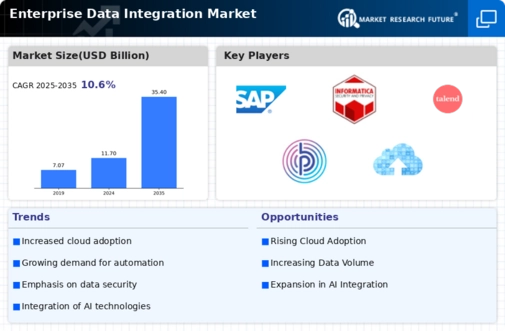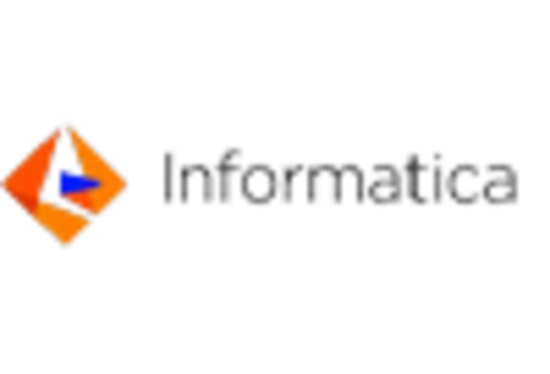Market Share
Enterprise Data Integration Market Share Analysis
The Enterprise Data Integration Market is influenced by a range of factors that collectively shape its dynamics and trajectory. One of the primary drivers is the escalating need for organizations to seamlessly connect and integrate diverse data sources. As businesses accumulate vast amounts of data from various systems and platforms, the demand for solutions that facilitate efficient data integration, transformation, and loading (ETL) becomes paramount. Enterprise data integration platforms play a pivotal role in unifying data from disparate sources, enabling organizations to derive meaningful insights and make informed decisions.
The increasing adoption of cloud computing is another significant factor driving the Enterprise Data Integration Market. As businesses migrate their operations to the cloud, the challenge of integrating on-premises and cloud-based data sources arises. Enterprise data integration solutions address this challenge by providing cloud-native capabilities, allowing organizations to create a unified data environment that spans both on-premises and cloud infrastructures. This flexibility is crucial for modern businesses operating in hybrid and multi-cloud environments.
Moreover, the surge in big data analytics and business intelligence initiatives contributes to the growth of the Enterprise Data Integration Market. Organizations recognize the value of harnessing the power of big data to gain insights into customer behavior, market trends, and operational performance. Data integration platforms enable the smooth flow of data between big data repositories and analytics tools, facilitating timely and accurate analysis that is essential for data-driven decision-making.
The evolution of data privacy and regulatory compliance requirements significantly influences the market. As governments enact stringent data protection laws such as GDPR and CCPA, organizations must ensure that their data integration processes adhere to these regulations. Enterprise data integration solutions with built-in security and compliance features become crucial for organizations seeking to avoid regulatory penalties and safeguard the privacy of sensitive information.
Market competition and technological advancements play a vital role in shaping the Enterprise Data Integration Market. Established vendors and emerging players continually innovate to offer enhanced features, scalability, and ease of use. Integration with emerging technologies such as artificial intelligence and machine learning further strengthens the capabilities of data integration platforms, enabling organizations to automate complex data processes and derive greater value from their data assets.
Additionally, the impact of the COVID-19 pandemic has accelerated the digital transformation initiatives of many organizations, leading to an increased focus on data integration. The need for remote collaboration, data accessibility, and insights into rapidly changing market conditions has underscored the importance of agile and efficient data integration solutions. Businesses are now prioritizing technologies that facilitate real-time data integration and support the evolving needs of a dynamic and distributed workforce.
The economic landscape also influences the Enterprise Data Integration Market. Organizations evaluate the cost-effectiveness and return on investment of data integration solutions. The ability of vendors to offer scalable and flexible pricing models, aligning with the diverse needs of businesses, is a crucial consideration. Cost-effective data integration solutions that demonstrate tangible value in terms of improved operational efficiency and strategic decision-making are likely to gain traction in the market.









Leave a Comment